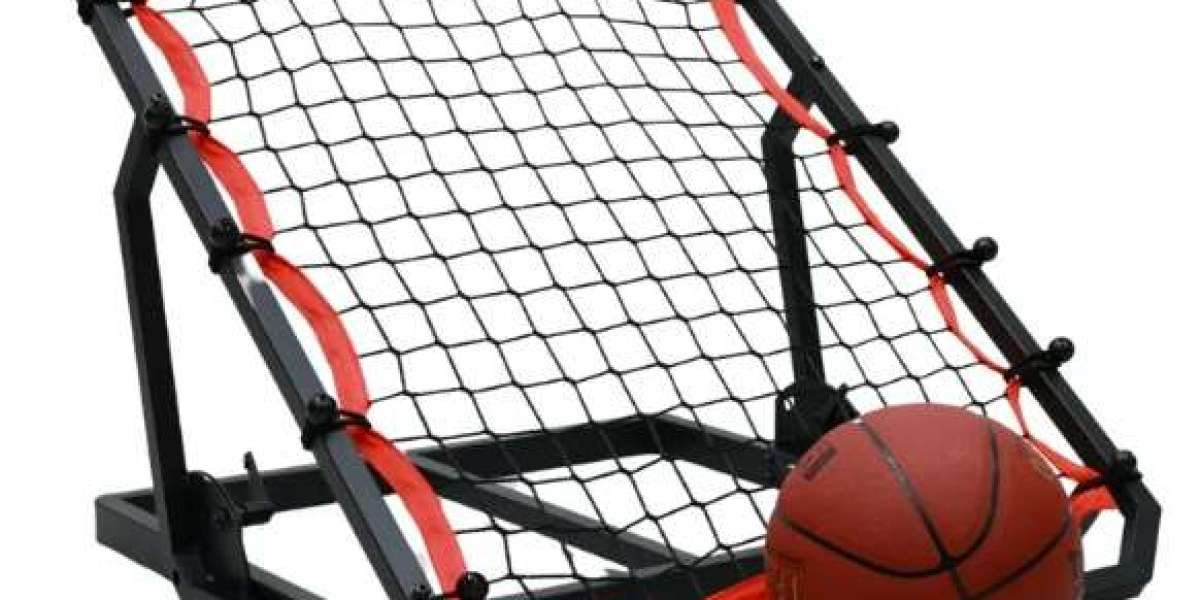Baseball is a sport that requires practice, skill, and precision. Whether you are working on your pitching, fielding, or reaction time, having the right training tools is essential. One of the most effective pieces of equipment for baseball players is the pitch back baseball rebounder. This simple yet versatile tool helps players practice on their own, allowing them to enhance their skills and improve their performance. In this article, we will explore what a pitch back baseball rebounder is, its benefits, different types, and tips for using it effectively.
What Is a Pitch Back Baseball Rebounder?
A pitch back baseball rebounder is a training device designed to help baseball players practice various aspects of the game. It consists of a netting material stretched over a frame that is set at an adjustable angle. When the player throws a ball at the rebounder, the ball bounces back towards them, allowing them to practice without needing a partner. This feature makes the rebounder ideal for solo practice sessions.
The angle of the rebounder can be adjusted to simulate different situations. For example, a higher angle can mimic a pop fly, while a lower angle is suitable for ground balls or pitches. This flexibility allows players to use the rebounder for a wide variety of drills, including throwing accuracy, fielding, and reaction time.
A pitch back baseball rebounder is an excellent training tool for athletes of all skill levels. Whether you are a beginner learning the basics of fielding or an advanced player working on refining your pitching technique, this equipment can help you achieve your training goals.
Why Use a Pitch Back Baseball Rebounder?
There are several reasons why a pitch back baseball rebounder is an essential tool for baseball players. Here are some of the key benefits:
Perfect for Solo Practice
One of the most significant advantages of using a pitch back baseball rebounder is that it allows players to practice alone. Unlike many other baseball drills that require a partner, the rebounder returns the ball directly to the player after each throw. This enables athletes to repeat drills and work on their technique without needing someone else to help. This is particularly valuable for players who do not always have access to a team or training partner.
Improves Throwing and Fielding Skills
For pitchers, a pitch back baseball rebounder offers an excellent opportunity to work on accuracy and control. By adjusting the angle of the rebounder, pitchers can simulate different types of pitches, such as fastballs, curveballs, or changeups. This allows them to practice their throwing mechanics and improve their pitch placement.
Fielders can also benefit from using a pitch back baseball rebounder. The device helps players practice catching ground balls, pop flies, and line drives. By adjusting the angle, players can simulate various fielding situations, allowing them to work on their reflexes and glove skills. The rebounder can also help fielders improve their ability to quickly return the ball to their teammates, an essential skill during games.
Builds Reaction Time
Baseball is a fast-paced sport that requires quick reactions. Whether you are pitching, hitting, or fielding, reaction time plays a crucial role in your success. A pitch back baseball rebounder helps players build their reaction time by returning the ball at unpredictable angles. This challenge forces players to stay alert and be ready to react quickly to the ball. By using the rebounder regularly, players can improve their reflexes and reaction time, both of which are essential for success on the field.
Increases Confidence
Another benefit of using a pitch back baseball rebounder is that it can boost a player’s confidence. By practicing consistently and repeating drills, players can refine their skills and build muscle memory. As they improve their technique, players gain confidence in their abilities, which can translate into better performance during actual games. The more time spent on the rebounder, the more comfortable and confident players will feel with their baseball skills.
Types of Pitch Back Baseball Rebounders
There are several types of pitch back baseball rebounders available on the market, each with its unique features. When selecting a rebounder, it’s essential to consider your specific training needs and preferences.
Standard Rebounders
A standard pitch back baseball rebounder is a simple design that returns the ball at different angles based on the position of the net. These models are generally affordable and easy to use, making them a great option for players who are just starting. Standard rebounders are ideal for general fielding drills, throwing accuracy, and solo practice.
Adjustable Angle Rebounders
Some pitch back baseball rebounders come with adjustable angles, which offer more flexibility during practice. By changing the angle of the rebounder, players can simulate various pitching and fielding situations. For example, a higher angle can simulate a pop fly, while a lower angle can mimic a ground ball or short throw. This type of rebounder is excellent for athletes who want to work on different aspects of their game and improve their versatility.
Heavy-Duty Rebounders
Heavy-duty pitch back baseball rebounders are designed for players who engage in intense training sessions. These models are built with stronger materials and reinforced frames to withstand frequent use and high-impact throws. Heavy-duty rebounders are ideal for teams or players who train regularly and want a durable, long-lasting piece of equipment. While these rebounders tend to be more expensive, they are perfect for athletes who need equipment that can handle continuous use.
Portable Rebounders
Portable pitch back baseball rebounders are lightweight and easy to transport, making them a great choice for players who like to practice at different locations. These models are often foldable, allowing for easy storage and transportation. Some portable rebounders also come with carrying bags for added convenience. Portable rebounders are perfect for players who want to practice at the park, field, or even in their backyard.
Tips for Using a Pitch Back Baseball Rebounder
To get the most out of your pitch back baseball rebounder, consider the following tips:
Adjust the Angle for Different Drills
One of the main benefits of a pitch back baseball rebounder is its adjustable angle. Experiment with different settings to simulate various scenarios. For example, you can use a steep angle to practice catching pop flies or a lower angle for ground balls. By adjusting the rebounder, you can create different challenges and keep your practice sessions dynamic and engaging.
Focus on Pitching Accuracy
Pitchers can use the rebounder to work on their accuracy and control. By adjusting the angle of the rebounder, pitchers can simulate different types of pitches and practice placing the ball in specific areas of the strike zone. Focus on throwing the ball with precision, and over time, you’ll notice improvement in your pitching consistency and command.
Practice Fielding Reflexes
Fielders can work on their reaction time and reflexes by using the pitch back baseball rebounder for ground balls, line drives, and pop flies. The unpredictable bounce of the ball challenges fielders to react quickly and make accurate throws. As you practice, you’ll build muscle memory and improve your ability to track the ball, judge its trajectory, and make quick decisions in the field.
Set Targets for Accuracy
Many pitch back baseball rebounders come with target areas on the net. These targets can help improve your throwing accuracy and fielding precision. Aim for specific targets while practicing to develop better control over your throws and improve your ability to place the ball in the right spot during real games.
How to Choose the Right Pitch Back Baseball Rebounder
When selecting a pitch back baseball rebounder, consider the following factors:
- Durability: Look for a rebounder made from high-quality materials that can withstand the impact of hard throws and regular use. A durable rebounder will last longer and provide consistent performance over time.
- Size: Consider the size of the rebounder based on your training space. Larger rebounders provide a bigger target and can handle more intense drills, while smaller models are easier to transport and store.
- Adjustability: Choose a rebounder with adjustable angles to customize your practice sessions and simulate different game scenarios.
- Portability: If you plan to take your rebounder to different locations, look for a lightweight, portable model that is easy to carry and store.
- Price: Rebounders come in a range of prices. While higher-end models may offer more features, there are also budget-friendly options that still provide great value for solo practice.
Conclusion
A pitch back baseball rebounder is an invaluable tool for players looking to improve their skills. Whether you’re working on pitching, fielding, or reaction time, this versatile piece of equipment allows for solo practice and can help elevate your training routine. With its adjustable angles, durability, and portability, a pitch back baseball rebounder is suitable for players of all skill levels. By incorporating it into your practice sessions, you can refine your technique, boost your confidence, and become a more skilled baseball player.

![Mualani Aufstieg - Genshin Impact [Version 5.0]](https://soucial.net/upload/photos/2024/07/ll3tKuQJygsJ3ccJsRw1_24_003f50f35161985bd7c50e70253a3903_image.png)

